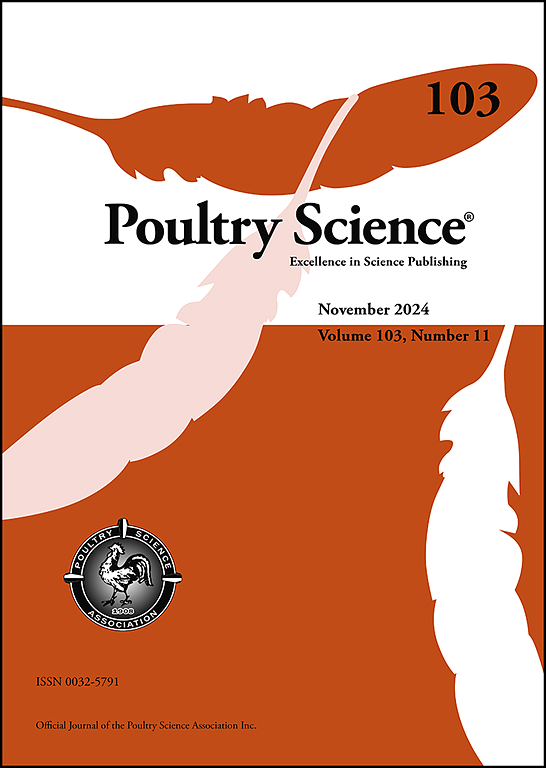Dietary Puerariae Lobatae Radix polysaccharides improve ovarian function and reproductive efficiency in laying hens with fatty liver hemorrhagic syndrome
IF 3.8
1区 农林科学
Q1 AGRICULTURE, DAIRY & ANIMAL SCIENCE
引用次数: 0
Abstract
Fatty liver hemorrhagic syndrome (FLHS) is a common nutritional and metabolic disease in laying hens, leading to a rapid decline in egg production. This study aims to evaluate the antioxidant effects of dietary supplementation with Pueraria Lobatae Radix polysaccharide (PLRP) on laying hens with FLHS induced by a high-energy low-protein (HELP) diet. A total of 72 thirty-seven-wk-old Hy-Line Brown laying hens were divided into 4 groups: basal diet (CON), HELP diet (HELP), HELP + 100 mg/kg PLRP (HELP-Low), and HELP + 300 mg/kg PLRP (HELP-High), with 6 replicates of 3 hens each. After 4 weeks on the HELP diet, PLRP was added to the diet of the HELP-Low and HELP-High groups for 8 weeks. The results demonstrated that PLRP supplementation significantly improved laying rate compared to the HELP group, with the HELP-Low and HELP-High groups exhibiting respective increases of 23.81% and 28.57% (P < 0.01). PLRP also promoted follicular development, increasing the number of stratified, primary, and secondary follicles and improving the ovarian index. Biochemical analysis revealed enhanced antioxidant activity, with increased levels of T-AOC, T-SOD, and GSH-Px and reduced MDA in the liver and ovaries of PLRP-treated hens (P < 0.05). At the molecular level, PLRP upregulated mRNA expression of ER-α, ER-β, MTTP, APOB, APOVLDL-II, and VTG-II in the liver, as well as VLDLR, LHR, and FSHR in the ovaries, facilitating yolk precursor biosynthesis and follicular development (P < 0.05). It indicated that PLRP supplementation mitigates oxidative stress and enhances yolk precursor synthesis, thereby improving egg production in FLHS-affected hens. PLRP shows promise as an effective feed additive for preventing and alleviating FLHS in laying hens. Future studies will investigate the regulatory effects of PLRP on gut microbiota composition and its potential interactions with FLHS in laying hens.
求助全文
约1分钟内获得全文
求助全文
来源期刊

Poultry Science
农林科学-奶制品与动物科学
CiteScore
7.60
自引率
15.90%
发文量
0
审稿时长
94 days
期刊介绍:
First self-published in 1921, Poultry Science is an internationally renowned monthly journal, known as the authoritative source for a broad range of poultry information and high-caliber research. The journal plays a pivotal role in the dissemination of preeminent poultry-related knowledge across all disciplines. As of January 2020, Poultry Science will become an Open Access journal with no subscription charges, meaning authors who publish here can make their research immediately, permanently, and freely accessible worldwide while retaining copyright to their work. Papers submitted for publication after October 1, 2019 will be published as Open Access papers.
An international journal, Poultry Science publishes original papers, research notes, symposium papers, and reviews of basic science as applied to poultry. This authoritative source of poultry information is consistently ranked by ISI Impact Factor as one of the top 10 agriculture, dairy and animal science journals to deliver high-caliber research. Currently it is the highest-ranked (by Impact Factor and Eigenfactor) journal dedicated to publishing poultry research. Subject areas include breeding, genetics, education, production, management, environment, health, behavior, welfare, immunology, molecular biology, metabolism, nutrition, physiology, reproduction, processing, and products.
 求助内容:
求助内容: 应助结果提醒方式:
应助结果提醒方式:


